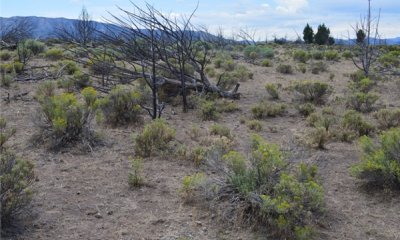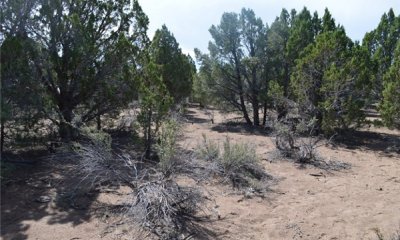
GRAVELLY CLAY 10-12 P.Z.
Scenario model
Current ecosystem state
Select a state
Management practices/drivers
Select a transition or restoration pathway
- Transition A More details
- Transition A More details
- Transition B More details
- Transition C More details
- Restoration pathway A More details
- Transition A More details
- Transition B More details
- Restoration pathway A More details
- Restoration pathway A More details
- Transition A More details
- Restoration pathway C More details
- Restoration pathway B More details
- Transition B More details
- Transition A More details
-
No transition or restoration pathway between the selected states has been described
Target ecosystem state
Select a state
Description
The Reference State 1.0 is representative of the natural range of variability under pristine conditions. The reference state has three general community phases: a shrub-grass dominant phase, a perennial grass dominant phase, and a shrub dominant phase. State dynamics are maintained by interactions between climatic patterns and disturbance regimes. Negative feedbacks enhance ecosystem resilience and contribute to the stability of the state. These include the presence of all structural and functional groups, low fine fuel loads, and retention of organic matter and nutrients. Plant community phase changes are primarily driven by fire, periodic drought and/or insect or disease attack.
Submodel
Description
This state is similar to the Reference State 1.0. with similar community phases plus the addition of the 2.4 at-risk community phase. Ecological function has not changed, however the resiliency of the state has been reduced by the presence of invasive weeds. Non-natives may increase in abundance but will not become dominant within this state. These non-natives can be highly flammable and can promote fire where historically fire had been infrequent. Negative feedbacks enhance ecosystem resilience and contribute to the stability of the state. These feedbacks include the presence of all structural and functional groups, low fine fuel loads, and retention of organic matter and nutrients. Positive feedbacks decrease ecosystem resilience and stability of the state. These include the non-natives’ high seed output, persistent seed bank, rapid growth rate, ability to cross pollinate, and adaptations for seed dispersal. Additionally, the presence of highly flammable, non-native species reduces State resilience because these species can promote fire where historically fire has been infrequent leading to positive feedbacks that further the degradation of the system.
Submodel
Description
This state has one community phase and is the product of many years of heavy grazing during time periods harmful to deep-rooted perennial bunchgrasses. With a reduction in deep-rooted perennial bunchgrass competition, bluegrasses and squirreltail will increase and become the dominant grass. Sagebrush dominates the overstory. Bitterbrush and/or rabbitbrush may be significant components. Sagebrush cover exceeds site concept and may be decadent, reflecting stand maturity and lack of seedling establishment due to competition with mature plants. Bare ground is also increasing. The shrub overstory and bluegrass understory dominate site resources such that soil water, nutrient capture, nutrient cycling and soil organic matter are temporally and spatially redistributed.
Submodel
State 4
Annual State



Description
This state has two community phases. One phase is characterized by the dominance of annual non-native species such as cheatgrass and tansy mustard. The second phase has either mountain big sagebrush and/or rabbitbrush dominating the overstory with an understory of annual non-natives.
Submodel
Description
This state has two community phases that are characterized by the dominance of Utah juniper and singleleaf pinyon in the overstory. Mountain big sagebrush and perennial bunchgrasses may still be present, but they are no longer controlling site resources. Soil moisture, soil nutrients and soil organic matter distribution and cycling have been spatially and temporally altered.
Submodel
Description
This state has three community phases a grass-dominated phase; a grass-shrub phase and a shrub dominated phase. The state is characterized by the dominance of seeded species such as smooth brome and crested wheatgrass. Other seeded species include forage kochia, Wyoming big sagebrush, and native and non-native perennial forbs.
Submodel
Mechanism
Trigger: This transition is caused by the introduction of non-native annual plants, such as cheatgrass, mustards, and bur buttercup.
Slow variables: Over time the annual non-native species will increase within the community.
Threshold: Any amount of introduced non-native species causes an immediate decrease in the resilience of the site. Annual non-native species cannot be easily removed from the system and have the potential to significantly alter disturbance regimes from their historic range of variation.
Mechanism
Trigger: To Community Phase 3.1: Repeated heavy growing season grazing will decrease or eliminate deep rooted perennial bunchgrasses, increase Sandberg bluegrass and favor shrub growth and establishment.
Slow variables: Long term decrease in deep-rooted perennial grass density.
Threshold: Loss of deep-rooted perennial bunchgrasses changes nutrient cycling, nutrient redistribution, and reduces soil organic matter.
Mechanism
Trigger: Fire and/or multiple fires lead to plant community phase 4.1, inappropriate grazing management that favors shrubs in the presence of non-native annual species leads to community phase 4.2.
Slow variables: Increased production and cover of non-native annual species.
Threshold: Loss of deep-rooted perennial bunchgrasses and shrubs truncates, spatially and temporally, nutrient capture and cycling within the community. Increased, continuous fine fuels from annual non-native plants modify the fire regime by changing intensity, size and spatial variability of fires.
Mechanism
Trigger: Time and lack of disturbance or management action allows for Utah Juniper and singleleaf pinyon to dominate. This may be coupled with grazing management that favors tree establishment by reducing understory herbaceous competition for site resources
Slow variables: Over time the abundance and size of trees will increase.
Threshold: Trees dominate ecological processes and number of shrub skeletons exceed number of live shrubs.
Mechanism
Brush management such as mowing, coupled with seeding of deep-rooted native bunchgrasses will reduce the shrub overstory and release the perennial understory species. Presence of annual nonnative species increases the risk of transitioning to an annual state if this treatment fails.
Mechanism
Trigger: To Community Phase 4.1: Severe fire. To Community Phase 4.2: Inappropriate grazing management in the presence of annual non-native species.
Slow variables: Increased production and cover of non-native annual species.
Threshold: Increased continuous fine fuels modify the fire regime by changing intensity, size, and spatial variability of fires. Changes in plant community composition and spatial variability of vegetation due to the loss of perennial bunchgrasses and sagebrush truncate energy capture spatially and temporally thus impacting nutrient cycling and distribution.
Mechanism
Trigger: Time and a lack of disturbance or management action allows for Utah Juniper and singleleaf pinyon to dominate site. This may be coupled with grazing management that favors tree establishment by reducing understory herbaceous competition for site resources.
Slow variables: Over time the abundance and size of trees will increase.
Threshold: Trees overtop mountain sagebrush and out-compete shrubs for water and sunlight. Shrub skeletons exceed live shrubs with minimal recruitment of new cohorts.
Mechanism
Seeding of deep-rooted bunchgrasses, coupled with brush management and/or herbicide. Probability of success is medium.
Mechanism
Tree removal and seeding of desired species. Tree removal practices that minimize soil disturbance are recommended. Probability of success declines with increased presence of non-native annual species (Community Phase 5.2).
Mechanism
Trigger: Catastrophic fire causing a stand replacement event will transition to Annual State 4.0. Inappropriate tree removal practices with soil disturbance will cause a transition to the Annual State 4.0.
Slow variables: Increased production and cover of non-native annual species under tree canopies.
Threshold: Closed tree canopy with non-native annual species dominant in the understory changes the intensity, size and spatial variability of fires. Changes in plant community composition and spatial variability of vegetation due to the loss of perennial bunchgrasses and sagebrush truncate energy capture and impact nutrient cycling and distribution
Mechanism
Tree removal and seeding of desired species. Tree removal practices that minimize soil disturbance are recommended. Probability of success declines with increased presence of non-native annual species (Community Phase 5.2).
Mechanism
This restoration is recommended for phase 5.1 only due to the lack of understory in 5.2. Removal of the pinyon and juniper overstory through tree removal practices or a controlled burn, without seeding of grass species, would move this phase into a shrub state. If nonnative annuals are present, a controlled burn is not recommended.
Mechanism
Trigger: Catastrophic fire.
Slow variables: Increased production and cover of non-native annual species.
Threshold: Increased continuous fine fuels modify the fire regime by changing intensity, size, and spatial variability of fires. Changes in plant community composition and spatial variability of vegetation due to the loss of perennial bunchgrasses and sagebrush truncate energy capture spatially and temporally, thus impacting nutrient cycling and distribution.
Mechanism
Trigger: Time and lack of disturbance or management action allows for Utah Juniper to dominate. This may be coupled with grazing management that favors tree establishment by reducing understory herbaceous competition for site resources
Slow variables: Over time, the abundance and size of trees will increase.
Threshold: Trees dominate ecological processes and number of shrub skeletons exceed number of live shrubs.
Model keys
Briefcase
Add ecological sites and Major Land Resource Areas to your briefcase by clicking on the briefcase (![]() ) icon wherever it occurs. Drag and drop items to reorder. Cookies are used to store briefcase items between browsing sessions. Because of this, the number of items that can be added to your briefcase is limited, and briefcase items added on one device and browser cannot be accessed from another device or browser. Users who do not wish to place cookies on their devices should not use the briefcase tool. Briefcase cookies serve no other purpose than described here and are deleted whenever browsing history is cleared.
) icon wherever it occurs. Drag and drop items to reorder. Cookies are used to store briefcase items between browsing sessions. Because of this, the number of items that can be added to your briefcase is limited, and briefcase items added on one device and browser cannot be accessed from another device or browser. Users who do not wish to place cookies on their devices should not use the briefcase tool. Briefcase cookies serve no other purpose than described here and are deleted whenever browsing history is cleared.
Ecological sites
Major Land Resource Areas
The Ecosystem Dynamics Interpretive Tool is an information system framework developed by the USDA-ARS Jornada Experimental Range, USDA Natural Resources Conservation Service, and New Mexico State University.


